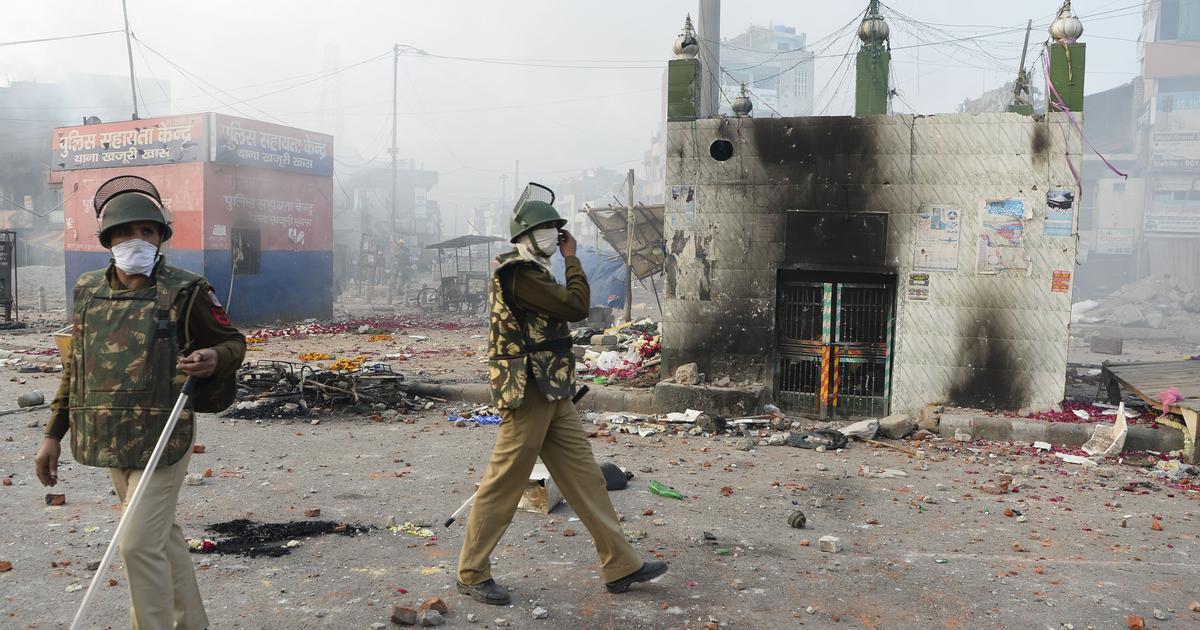
The Delhi High Court has granted bail to two accused Shahnawaz and Mohd. Ayyub, charged for murder, voluntary causing hurt to a public servant on duty, and obstructing a public servant in discharge of public functions under the Indian Penal Code and other relevant sections of the Prevention of Damage to Public Property Act in FIR 60 of 2020.
The issue for consideration before Justice Subramonium Prasad was that when an offence of murder is committed by an unlawful assembly, then should each person in the unlawful assembly be denied the benefit of bail, regardless of his role in the unlawful assembly or the object of the unlawful assembly?
Justice Prasad said that the Supreme Court has consistently held that in order to convict an accused with the aid of Section 149 (unlawful assembly), a clear finding needs to be given by the court regarding the nature of unlawful common object. Furthermore, he opined that if any such finding is absent or if there is no overt act on behalf of the accused, the mere fact that the accused was armed would not be sufficient to prove common object.
He thus held, “It is, therefore, noted that the applicability of Section 149 IPC, specifically read with Section 302 (murder), cannot be done on the basis of vague, evidence and general allegations. When there is a crowd involved, at the juncture of grant or denial of bail, the court must hesitate before arriving at the conclusion that every member of the unlawful assembly inhabits a common intention to accomplish the unlawful common object.”
Justice Prasad said that there cannot be an umbrella assumption of guilt on behalf of every accused by the court, and every decision must be taken based on a careful consideration of the facts and circumstances in the matter. He observed that Shahnawaz was arrested on March 29 last year and Ayyub on March 11 last year and both have been in judicial custody since then.
In Shahnawaz’s matter (Bail App. No. 2444 of 2021), the high court held that the material on record revealed that there is no electronic evidence which placed him at the scene of crime during the time of the alleged incident. Since he is a resident of North East Delhi, the court held that his call data records are inconclusive.
The Court also noted that the audio clip which has been recovered from his mobile phone is inconclusive, as it failed to reveal whether it was him who was involved in the alleged acts committed. The court said, “The audio clips also do not indicate whether the Petitioner was at the Scene of Crime, and therefore, they cannot form any basis for keeping the Petitioner in prolonged incarceration.”
In Ayyub’s bail plea (Bail App. No. 1945 of 2021), the court said that the video footage he is seen in, does not indicate whether he was part of the unlawful assembly at the scene of crime. The order read, “Additionally, the video footage in Camera ID 7033161, wherein it is alleged that the Petitioner is seen going towards the SOC, cannot be taken into account at this juncture to establish that the petitioner participated in the incident. The CDR in the instant case of the Petitioner is inconclusive as the Petitioner is a resident of the local area, i.e., Gali No. 3.”
The court also held that the statements of public witnesses and police officials were not sufficient to justify the continued incarceration of the two accused persons.
No deprivation of personal liberty in the face of excess of State power
The high court also laid down the principles of bail while granting relief to the two accused in FIR 60 of 2020. While observing that they have been in jail for over 17 months, the court said that bail jurisprudence attempts to bridge the gap between the personal liberty of an accused and ensuring social security remains intact.
It said, “It is the intricate balance between securing the personal liberty of an individual and ensuring that this liberty does not lead to an eventual disturbance of public order. It is egregious and against the principles enshrined in our Constitution to allow an accused to remain languishing behind bars during the pendency of the trial.”
The court also recorded in its order, “It is the Constitutional duty of the Court to ensure that there is no arbitrary deprivation of personal liberty in the face of excess of State power”. Reiterating that bail is the rule and jail is the exception, Justice Prasad said that courts must exercise their jurisdiction to uphold the tenets of personal liberty, subject to rightful regulation of the same by validly enacted legislation.
The court said, “The Supreme Court has time and again held that Courts need to be alive to both ends of the spectrum, i.e., the duty of the Courts to ensure proper enforcement of criminal law, and the duty of the Courts to ensure that the law does not become a tool for targeted harassment.”
The judgments may be read here:
Related:
Delhi violence: What is happening in case involving the conspiracy FIR under UAPA?
Production of electronic evidence delayed: Student activists to Delhi Court, 2020 Violence
Delhi Violence case: Court discharges 3 accused citing shoddy investigation